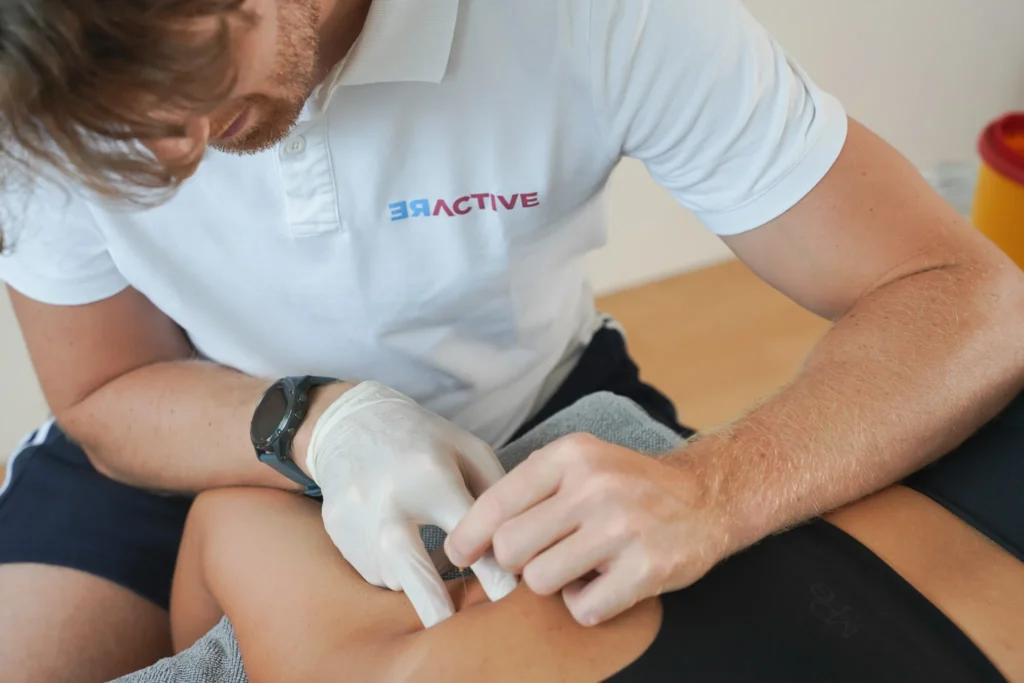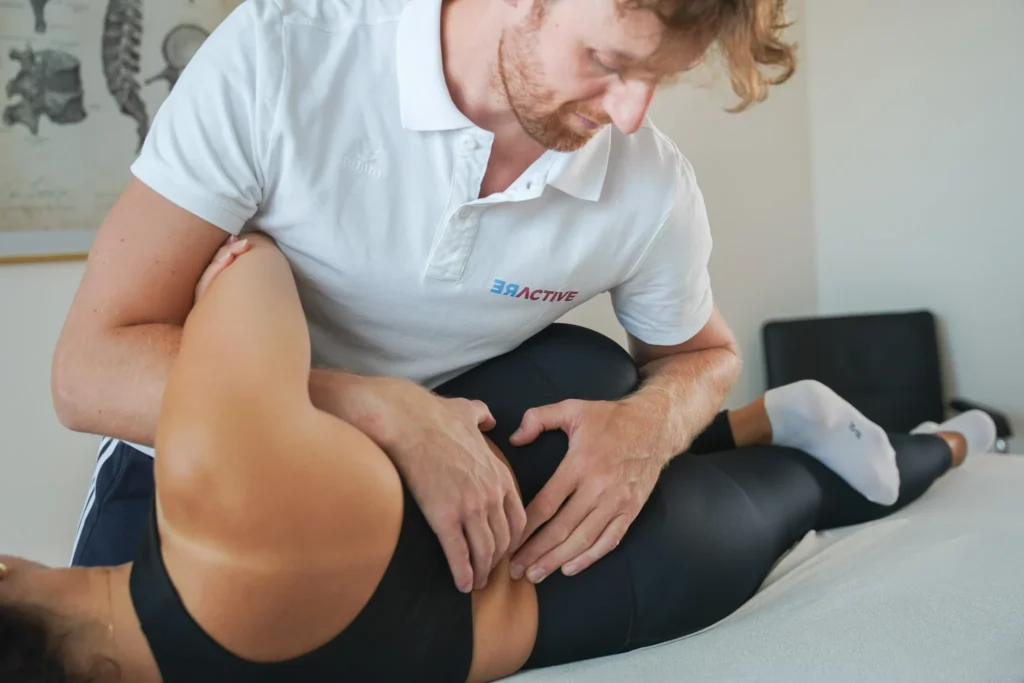Physiotherapy for Rock Climbers in Thun, Switzerland
Physiotherapy identifies your injury’s origin and analyzes your current physical capabilities. Be it a torn pully ligament, shoulder pain, tenosynovitis, tendinitis, shoulder instability, or a torn lumbrical muscle, each requires a deep dive into:
- The mechanism of your injury
- The healing phase of your injury
- Your current training regime
- The mobility & stability of the joints around your injury
- The strength of the muscles around the injury site
- Your neuromuscular control
- Your mental state
The bottom line is that we can’t treat your injury efficiently before we understand you, your training, and your injury.
So, what does physiotherapy look like when you make an appointment?
What Does a Physiotherapy Treatment for Rock Climbers Look Like?
A climbing physio treatment for rock climbers exists out of 2 parts. The first part is the first 1 to 2 appointments in which we focus on understanding you and your injury. The second part focuses on applying treatment modalities and ensuring you make the right steps to recover well.
1st Appointment (30 or 60 minutes):
- Intake interview: this helps me understand you and your injury
- Physical Assessment: to understand functional movement capacity, mobility, stability, and pain provocation
- Analysis & Discussion: I analyze the data from our intake and physical assessment and discuss the conclusion with you; where did your injury come from? What should you do now? How are we going to make sure it heals efficiently? And finally, how do we make sure it doesn’t happen again?
- Treatment: Based on my analysis and your feedback we come to a treatment plan and with clear roles for each of us. What we do in the clinic and what you can do at home to rehab efficiently.
2nd Appointments & After (30 minutes)
- Analysis of your progression: we discuss your progress, issues you encountered, and possible new symptoms that have arisen.
- Continuous adaptation to your progress
- Progression in the intensity of exercise therapy
- Application of treatment modalities like manual therapy, radial shockwave therapy, soft tissue mobilization

Physiotherapy Treatment Modalities
These are the main treatment modalities I use during climbing physiotherapy treatments.
Exercise Therapy
Exercise therapy is the most important part of sports physiotherapy for rock climbers, physiotherapy after surgery, and accidents. With the right exercises at the right moment, we can improve your:
- Mobility
- Stability
- Coordination
- Strength
- Hypertrophy
- Endurance
- Power
Doing exercises forces your body to adapt and get into the state you want it to be. Without it, any other treatment modalities are less effective. For example, soft tissue mobilization of the rotator cuff muscles might bring you more mobility. If you don’t repeat the use of this newly acquired mobility often, your brain won’t recognize it.
Soft Tissue Mobilization
Soft tissue mobilization is done with Manual Friction Massage on Trigger Points or myofascial release techniques. Both approaches can reduce pain, muscle tension, and improve mobility, and perceived stability. Soft tissue mobilization treatments should always be followed by exercise therapy to ensure the newly acquired situation remains.
Dry Needling
During a Dry Needling treatment, I use acupuncture needles to enhance blood circulation in myofascial trigger points to reduce pain and movement dysfunction.
Manual Therapy
Manual therapy is ideal for problems originating in joints. Like pain, neck pain, shoulder pain, and elbow pain. I mobilize and manipulate joints to improve movement quality. Manual therapy is a great way to reduce discomfort quickly and it should always be followed by exercise therapy to internalize the new range of motion in the brain.
Neuromobilization
Neuromoblization (NOI) is great for injuries involving the nervous system. Be it originating from the spine like herniated discs, radiculopathies as well as neurological problems in the limb like carpal tunnel syndrome and thoracic outlet syndrome.
Radial Shockwave Therapy
Radial Shockwave Therapy is a treatment that involves mechanical shockwaves applied with a machine. It can improve blood circulation, and cell metabolism, and can reduce pain by providing competition for your current pain. I use radial shockwave therapy for tendon injuries, bones that won’t heal, and on rare occasions on ligaments as well.

How Much Does Physiotherapy for Rock Climbers Cost?
If you’re a Swiss Resident/Citizen, Physiotherapy is paid from your basic insurance if you have a referral from a doctor. If you make an appointment without a referral, you pay yourself.
Our private fee is CHF70
Make a Climbing Physio Appointment
Please call +41 033 335 22 44. Make an online appointment by clicking the button below. You’ll be directed to the website of our clinic.